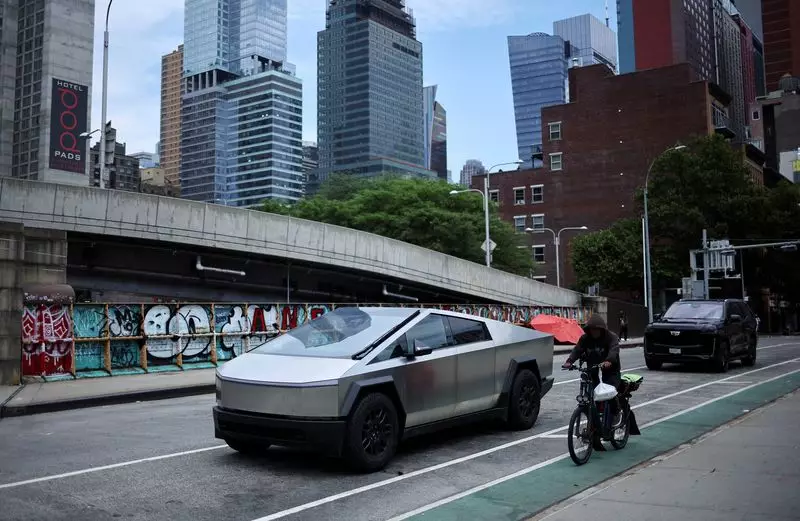In the fourth quarter, despite aggressive price cuts, Tesla found itself delivering a disappointing 15,000 units of its much-hyped Cybertruck. Over the entire year, projections indicated a total delivery range of only 35,000 to 40,000 units, a stark contrast to the initial claim of around 2 million pre-orders. This delivery shortfall has prompted significant scrutiny from analysts and investors alike, leading to broader questions about the viability of the Cybertruck and the implications for Tesla’s long-term strategy.
Analysts from Bernstein have characterized the Cybertruck’s performance as a disappointing miscalculation on Tesla’s part. They contend that the vehicle may not be contributing positively to the company’s gross margins, creating doubts about its profitability in a competitive market. The magnitude of time and resources invested in the Cybertruck’s development—spanning four years—has raised red flags regarding opportunity costs, especially when considering Tesla’s pressing need for more affordable vehicle options. The analysis paints a troubling picture of a product that has potentially diverted Tesla’s focus from developing competitive, lower-cost alternatives that consumers are increasingly demanding.
Adding to the concerns, Tesla has been grappling with declining auto gross margins, with Bernstein forecasting the decline to below 15%. This decline comes at a pivotal time when several U.S. and European internal combustion engine manufacturers continue to offer increasingly competitive pricing. Tesla’s aggressive pricing strategies, including promotional discounts and financing incentives, further complicate the business’s financial landscape. The result has been undermined financial health, evidenced by predicted earnings slumping from $2.60 in 2023 to approximately $2.10 in 2024, even when including additional regulatory credits. The sustainability of Tesla’s growth model comes under scrutiny when one considers external market pressures.
Challenges in the Autonomous Vehicle Race
In addition to worrying sales figures, Tesla’s aspirations in the robotaxi sector are facing increasing skepticism. While the company has steered investor attention towards autonomy, Bernstein analysts remain doubtful about Tesla’s edge over competitors like Waymo. Key challenges include Tesla’s comparatively modest sensor suite and the numerous regulatory hurdles that stand in the way of rapid progress. Furthermore, if Tesla were to achieve Level 5 autonomy before its peers, sustaining a competitive advantage would prove difficult, especially as advancements in AI and computing power democratize the technology across the industry.
While Tesla reported a nominal 2% year-over-year growth in Q4 deliveries, culminating in almost 496,000 units, the numbers fell short of market expectations and signaled an overall decline in annual deliveries. This trend points to a potential stagnation that could hinder Tesla’s long-term growth ambitions. Conversely, their energy storage segment showcased robust growth, with a staggering 244% increase in shipments to 11 GWh. As Tesla navigates this challenging landscape, its ability to pivot strategy and deliver compelling, innovative products will be crucial for maintaining market position and investor confidence. The questions surrounding the Cybertruck may serve as a pivotal moment for Tesla, underscoring the need for not only strong vision but also a strategic alignment with market dynamics.

